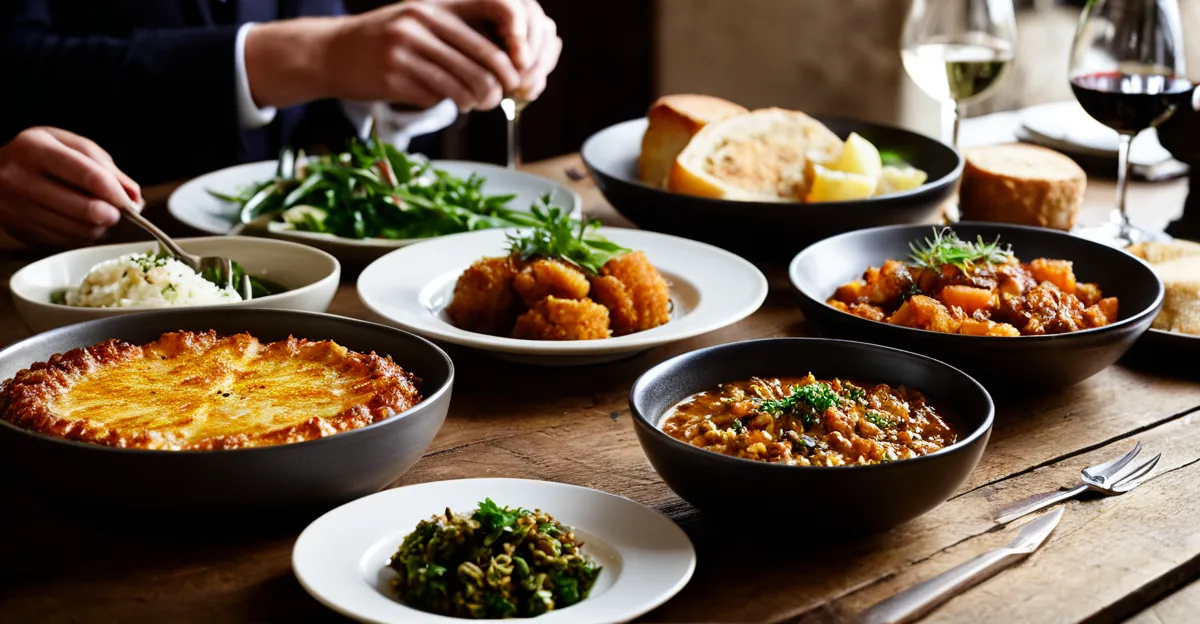Essential Principles for Modernising Traditional UK Dishes
Modern British recipes thrive by balancing heritage with innovation. Traditional British food fusion involves preserving the soul of classic UK dishes—think rich stews, hearty roasts, and comforting puddings—while updating them to suit contemporary UK cuisine preferences. The essence lies in respecting time-honoured flavours and textures but daring to introduce fresh elements.
Core principles focus on enhancing traditional recipes without overpowering their identity. Start by understanding the dish’s defining features: the ingredients, cooking techniques, and presentation that make it recognisably British. Then, approach modifications thoughtfully—substitute or add ingredients that complement rather than clash. For example, swapping out heavy cream for a lighter alternative maintains creaminess but aligns better with modern health aspirations.
Also read : How do you make a perfect Yorkshire pudding rise?
Retaining tradition while introducing new flavours involves clever use of spices, herbs, or fusion with international tastes. This might mean blending British staples with subtle hints from Mediterranean or Asian cuisine to uplift the dish. The goal is to satisfy evolving palates without losing the comforting familiarity that classic UK dishes offer.
By applying these principles, home cooks and chefs can create modern British recipes that feel both nostalgic and exciting, breathing new life into beloved UK culinary heritage.
Also read : How can UK culinary traditions inspire modern kitchen creations?
Creative Ingredient Swaps and Infusions
Refreshing traditional British food fusion often starts with smart ingredient substitutions. Using contemporary ingredients allows time-honoured dishes to shine in a new light while staying true to their roots. For example, swapping regular potatoes for sweet potato mash in mashed potato recipes adds subtle sweetness and vibrant colour, offering a modern twist on a classic staple.
Plant-based options are increasingly popular in modern British recipes, addressing dietary needs without sacrificing flavour. Replacing traditional meats with lentils or mushrooms in shepherd’s pie is an excellent way to maintain texture and heartiness while embracing a more sustainable approach.
Seasonal or global ingredients also invigorate UK classics. Incorporating Mediterranean herbs like rosemary or thyme and introducing spices from Asian cuisine can transform a familiar dish into a fresh experience. These subtle infusions enhance rather than overpower, key to successful British classics makeover.
Such ingredient swaps respect both tradition and evolving palates typical in contemporary UK cuisine. The right substitutions balance authenticity with innovation, allowing cooks to recreate beloved dishes with exciting new elements. This thoughtful approach to ingredient substitutions makes traditional foods more adaptable and relevant today, inviting everyone to explore and enjoy British culinary heritage in novel ways.
Modern Cooking Techniques for Classic UK Recipes
Contemporary UK cuisine benefits from modern cooking methods that update traditional British food while enhancing flavour and nutrition. Techniques like sous vide, air frying, and pressure cooking enable cooks to retain classic textures but with healthier and faster preparation. For example, air fryers reduce oil use in fish and chips, delivering crispiness akin to deep frying but with less fat, creating healthier UK dishes that satisfy traditional expectations.
Sous vide cooking allows precise temperature control, ensuring meats stay tender and juicy, a significant advantage for updated British cooking. It preserves moisture and intensifies flavours without overcooking. Pressure cookers also speed up slow-cooked stews and roasts, classic staples in modern British recipes, by breaking down tougher cuts quickly while preserving richness.
These modern cooking techniques simplify preparation steps, benefiting home cooks seeking convenience without sacrificing authenticity. Reducing fats and optimizing textures fits the growing demand for lighter, nutritious meals in contemporary UK cuisine.
Incorporating such tools invites innovation while maintaining the heart of traditional dishes. By adapting old recipes to new methods, cooks can create healthier, more accessible versions that appeal to today’s tastes, making classic UK food fusion an evolving culinary experience.


